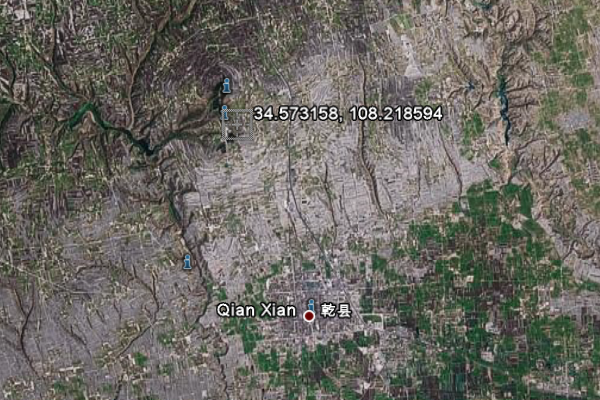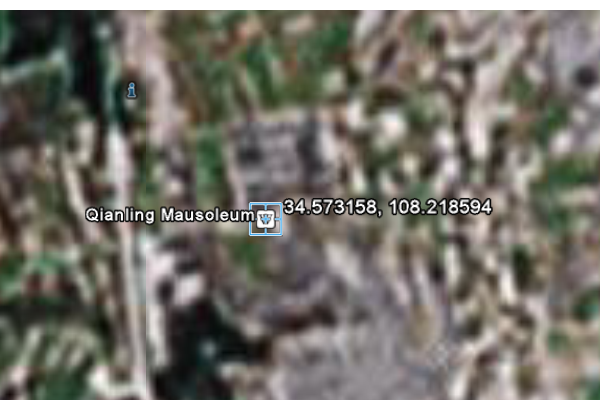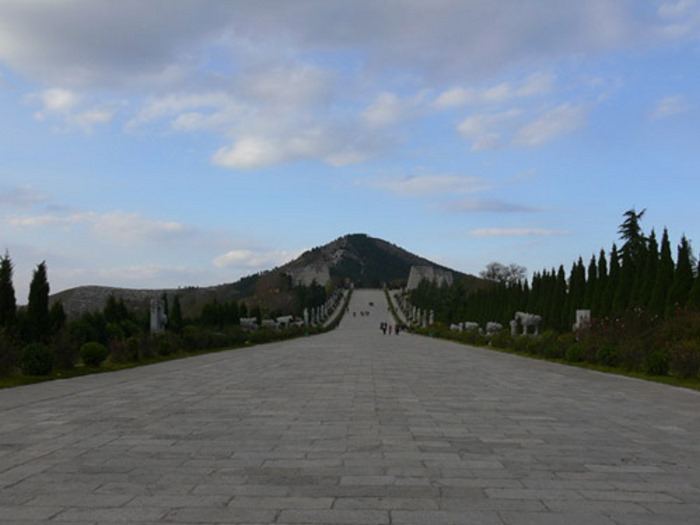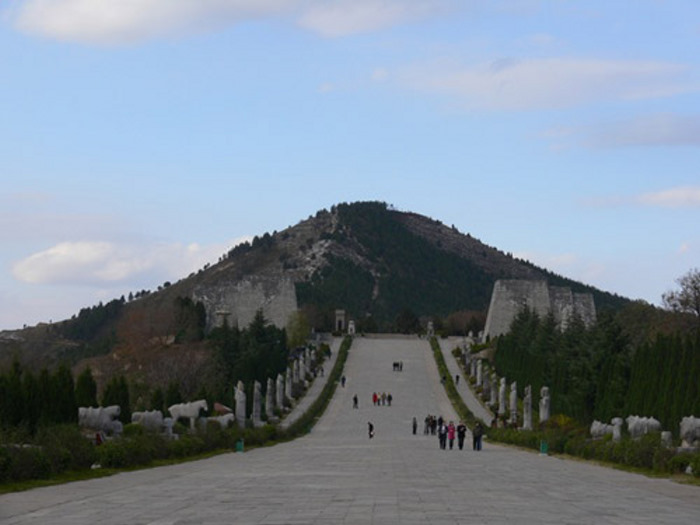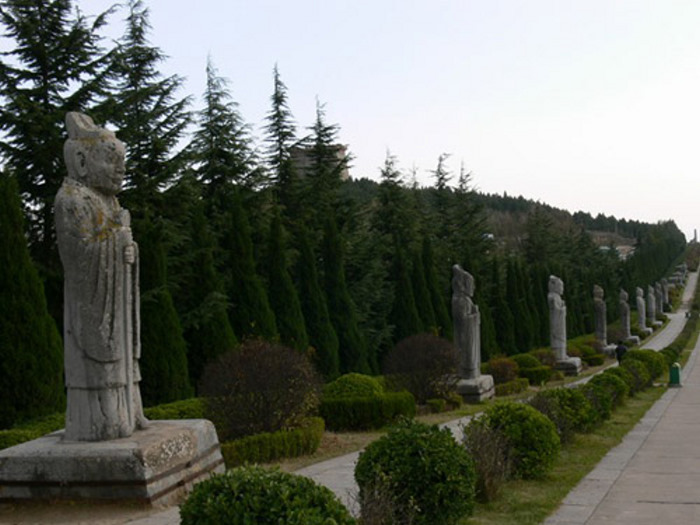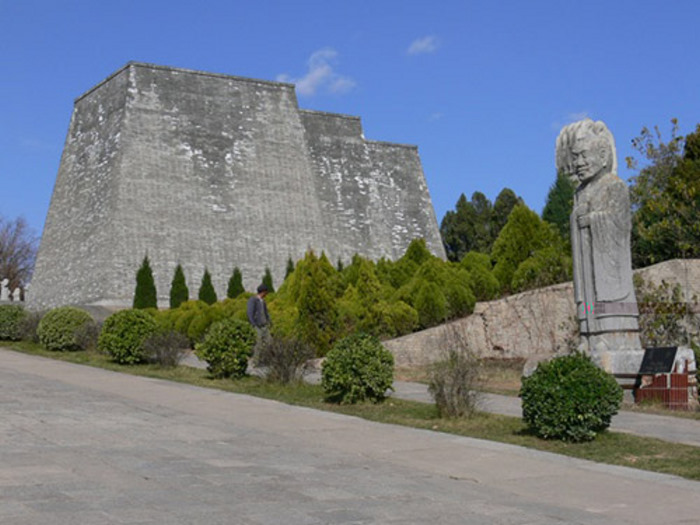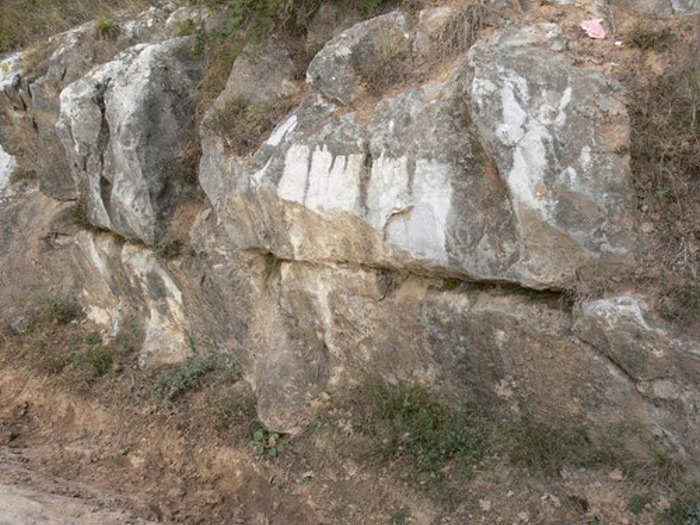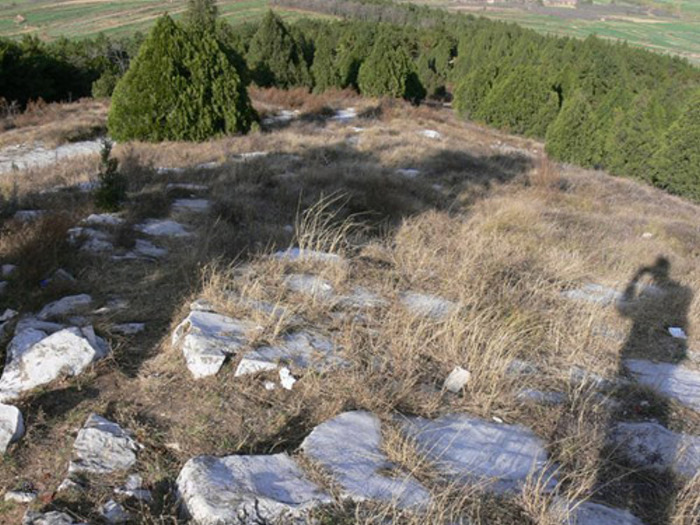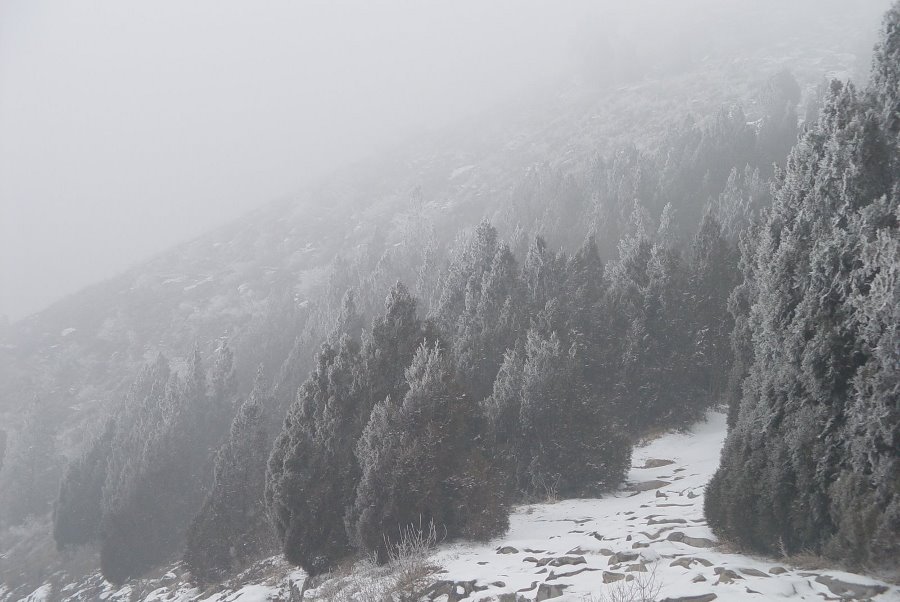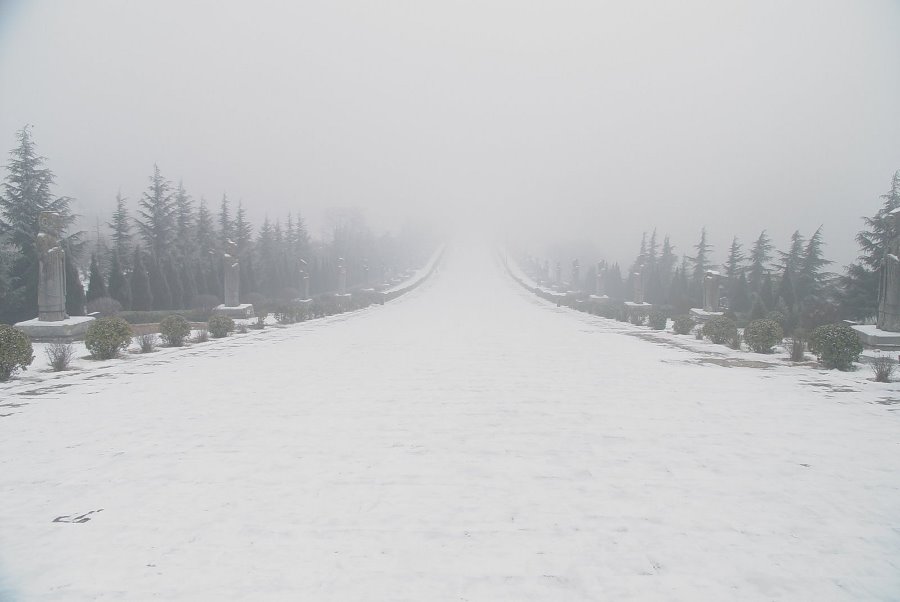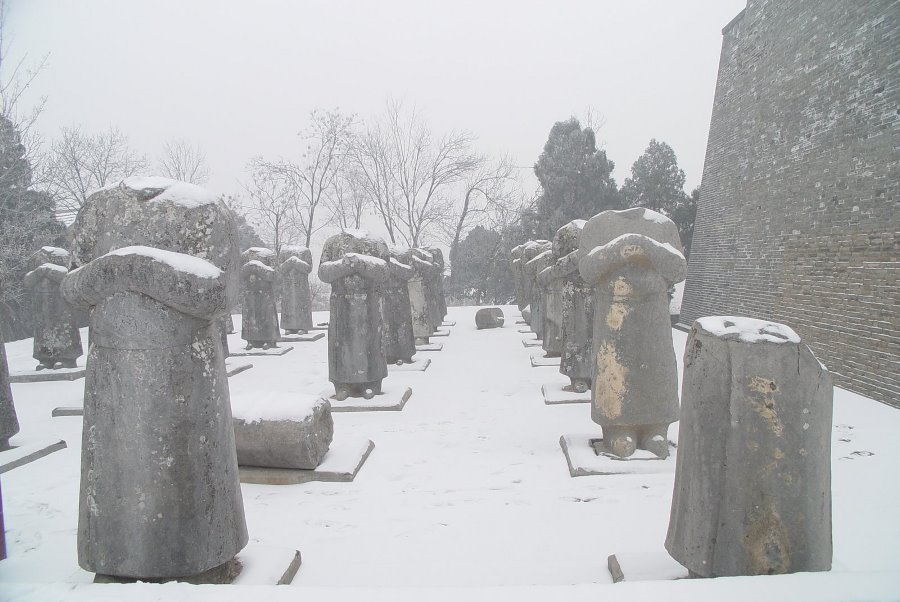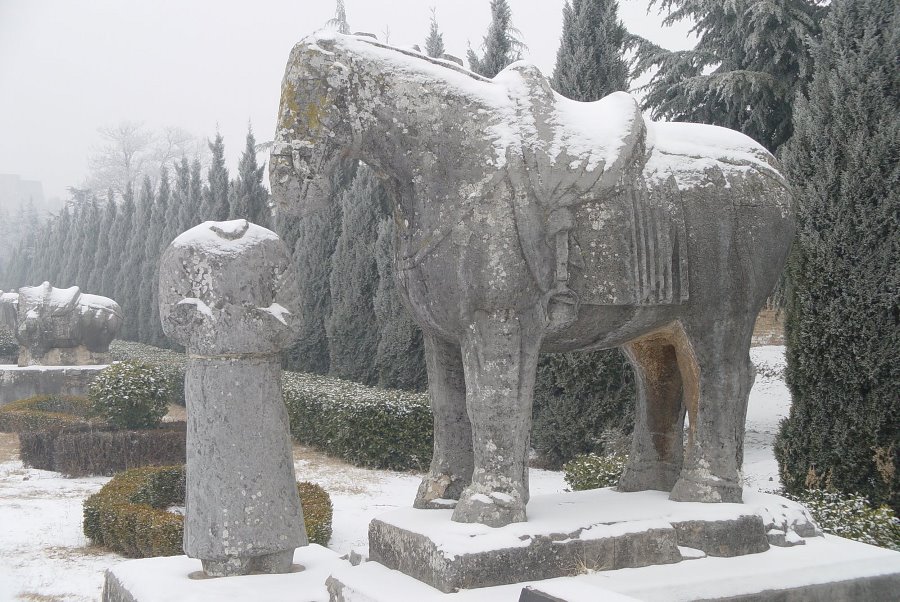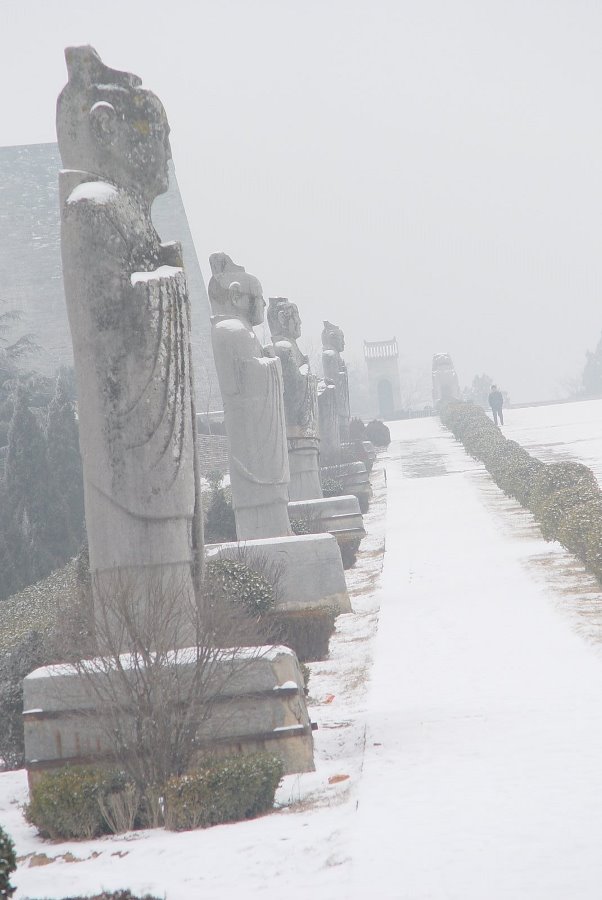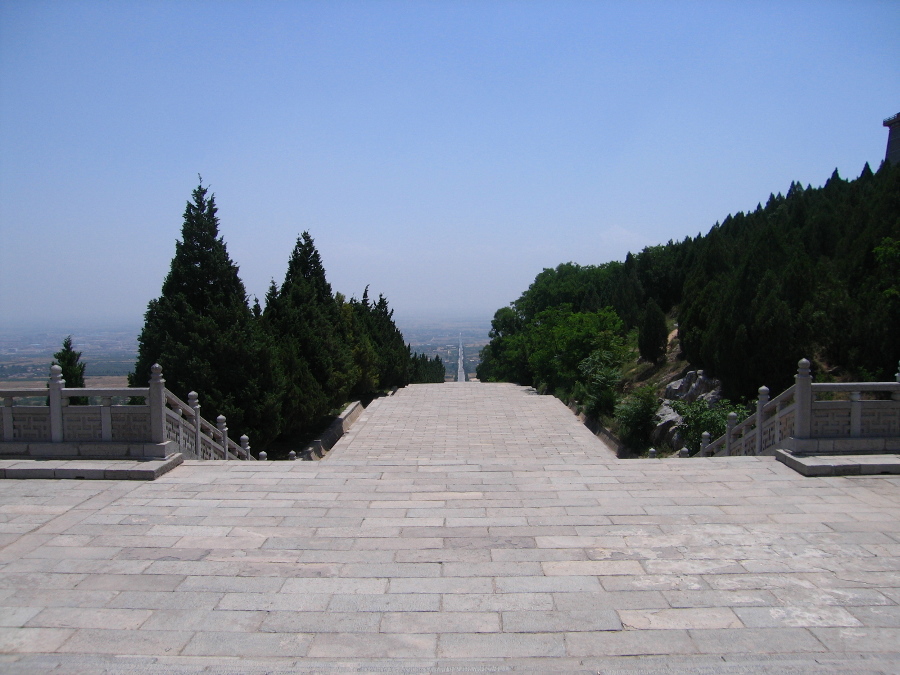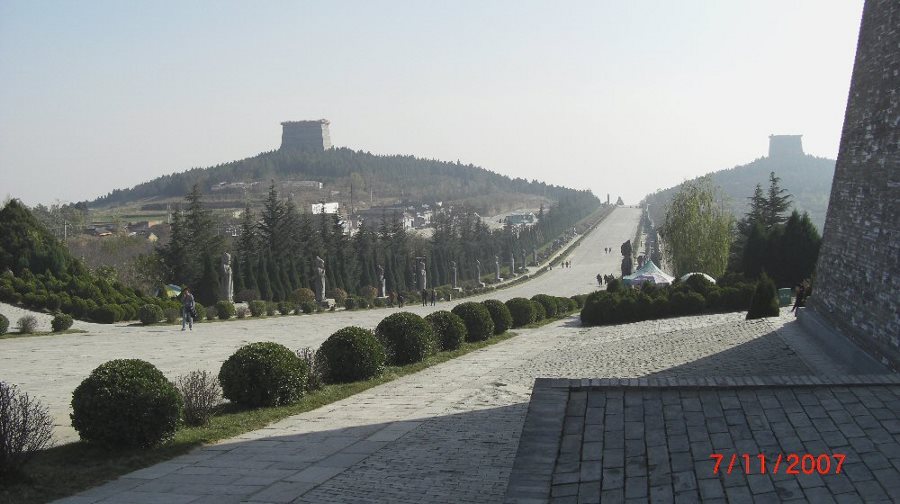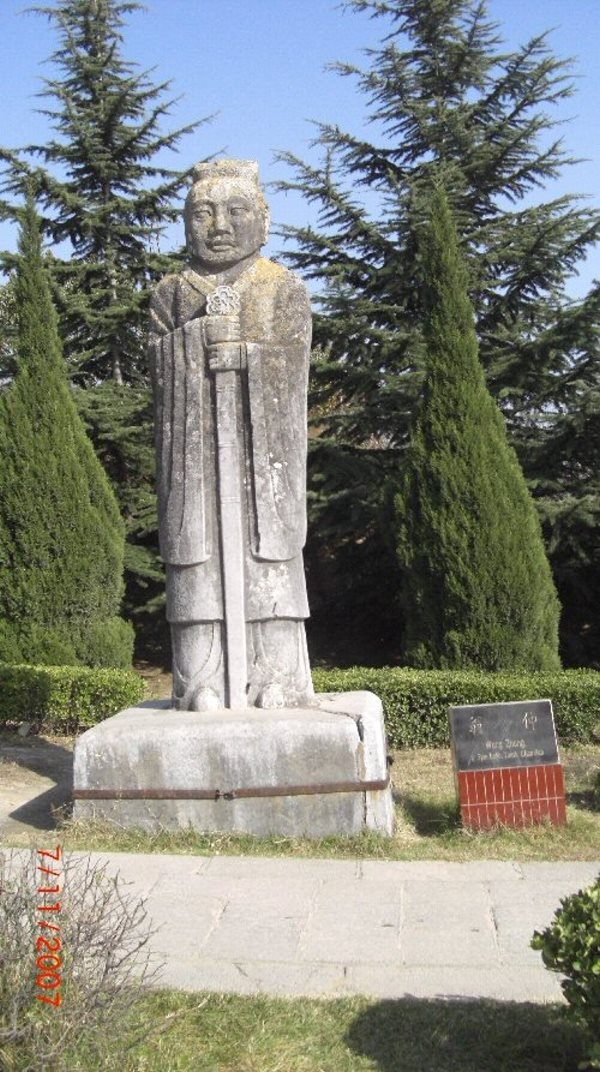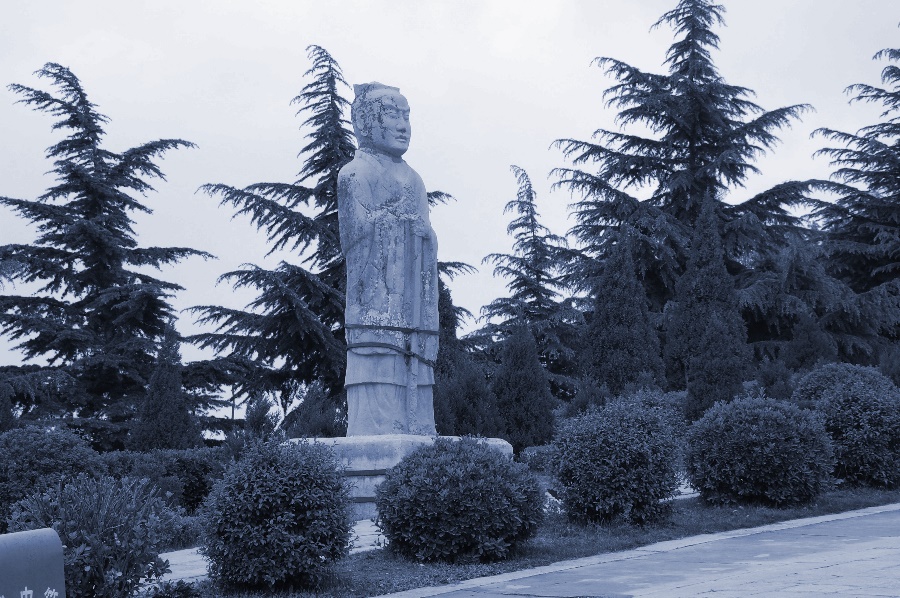|
The Pyramids of China |
|||||||||
|
Qiang Xian, China 34° 34′ 23.37″ N, 108° 13′ 6.94″ E ..
UPDATE The Chinese
White Pyramid has
been found
The Russian pyramid investigator Maxim Yakovenko has visited several Chinese pyramid complexes and has finally been able to identify the legendary “White Pyramid” as the Liangshan Mountain, which holds the tomb of Emperor Gaozong. As such, decades of speculation and mystery have finally been answered. The story of the White Pyramid came about in the 1940s, when eyewitness reports, specifically from pilot James Gaussman, related the presence of an enormous “White Pyramid” near the Chinese city of Xi’an. If true, it was bigger than the Great Pyramid of Giza. The region was off-limits to Western tourists for many decades afterwards and once this restriction was lifted, many pyramids were found, but the gigantic “White Pyramid” was not amongst them. A photograph of what was believed to be the White Pyramid, turned out to be one of a much smaller pyramid near Xi’an. So what was the White Pyramid? Had someone overestimated the dimensions of a smaller pyramid? The answer is a simple no. The photograph had nothing to do with the original account of the White Pyramid, and this is where the main problem has lain in recent years. The actual White Pyramid is Liangshan Mountain and it is as big as Gaussman and others had claimed it was. Liangshan Mountain is located in the vicinity of Qiang Xian, a small Chinese town located 80 km to the northwest from Xi’an. In 684 AD, the second emperor of the Tang Dynasty Gaozong was buried at the bottom of the mountain with his wife the Empress Wu. She reigned after Gaozong’s death. When she died in 705 AD, her body was buried near Gaozong’s on Liangshan Mountain. It is the only mausoleum where two Tang monarchs were buried. The Qianling mausoleum incorporates 17 attendant tombs, including the tombs of Princess Yongtai, Prince Zhanghuai and Prince Yide. Twenty stone sculptures guard the emperor and his wife from evil spirits and enemies. They line the way to the burial place, guarding it with unusual long swords. Behind the guards there is a reconstructed gate, built from clay, but finished with bricks. Next are two large statues of mythical monsters. Building the mausoleum and the inner chambers was an enormous accomplishment, but my research is primarily focused on the mountain where the emperor was buried, as this is the legendary White Pyramid. Liangshan is listed as a natural mountain that consists of three peaks. The two southern peaks are approximately the same size, but the northern peak is much taller and bigger. The two southern peaks consist of soil (so-called “central Chinese clay soil”, which is 30% clay, 35% clay elements and almost 40% limestone), but it is the northern peak that is the highest and consists of huge, almost straight stone plates which lie on the clay. A key account about the “White Pyramid” – though it had not yet received its name at the time – in the vicinity of Xi’an was given by Alfred Schroeder in 1912: “The pyramid is about 1,000 feet high (other descriptions estimate 1,000 to 1,200 feet high) and roughly 1,500 feet at the base, which makes it twice as large as any pyramid in Egypt. The four faces of the structure are oriented with the compass points.” This observation conforms to what we have seen on the ground about Liangshan Mountain: it is a colossal pyramid, with four visible sides, holding the tomb of emperor Gaozong. It is difficult to determine the height of the pyramid. If measured from the platform with the twenty guards, the height is 160 meters; if measured from the base of the pyramid, the height is about 300 meters, or ca. 1,000 feet! Schroeder also wrote: “Each side of the pyramid was of a different color: the northern side was black, the eastern blue, the southern red and the western side had a tint of white. The flat top of the pyramid was covered with yellow soil (clay).” Why did Schroeder describe each side of the pyramid as having a different color? The answer is the condition of the surface of the pyramid. The northern side of the pyramid is the most damaged by human activity. There are many modern man-made terraces and peasant gardens; therefore this side looks like a long slope of a natural hill. Since this side does not face the sun, the terraces have dark-grey color, conform to what Schroeder referred to as black. The eastern side is planted by coniferous trees having a tint of blue and green colors. The southern side was also damaged by local inhabitants and revealed the yellowish color of the clay, or for Schroeder, red. The western side of the pyramid is white because it is covered by massive stone blocks, in grey and white colors. It is this side, together with the light yellow of the top, which created the story of “the White Pyramid”. In fact, a long time ago, the entire pyramid was covered by massive white stone plates, even though the core structure of the pyramid is from pressed clay, conform to the other pyramids of Shaanxi province. But these massive plates slipped to the foot of the pyramid, the result of natural forces such as earthquakes and rain. Only on the western side did the plates remain relatively intact. Again, this is conform to Schroeder’s observations from a century ago: “The pyramid itself was built of pressed clay as were many constructions in China. Huge troughs extended along the walls of the pyramid having the size of mountain canyons. They were filled with stones too. There were trees and bushes on the slopes defacing the shape of the pyramid and making it similar to a natural object. I was fascinated by this amazing sight… Some time ago there were steps from the foot to the top of the pyramid but they are filled up with fragment of stones now. Some steps made of wild stones were seen at the bottom (each stone was three square feet).” In support of Schroeder’s description, many massive stone plates have indeed been found on the western side of the pyramid. Those plates have smooth surfaces and straight edges. They cover the whole of the western slope, but are damaged in certain areas. It appears that the stone plates were used to cover the pyramid from the elements and make the structure much sturdier. And it appears that they are manmade. The western side of the terrace also reveals big stone blocks that are in a bad condition. Regular blocks can be found laying on the clay. This has to be manmade as it is impossible for a regular shaped stone to form on clay or soil. I found many other features on the manmade terraces that have equally been constructed from massive stone blocks; one weighed at least 10 tons. The top of the block is damaged, but on the other sides of the block, I saw clean, sharp edges and flat surfaces. Little to no research has been carried out on the site, but it should not be ruled out that there was a mountain, which was later transformed into a pyramid. If the pyramid was built from the foundation to the top, it needed millions of tons of clay, and thousands of builders, making this an extra-ordinary achievement and definitely worthy of the legendary fame that the “White Pyramid” achieved in the 20th century. Either way, it is one of the biggest pyramids in the entire world. If we compare the descriptions of the White Pyramid by Schroeder and Gaussman with Liangshan Mountain, it is quite obvious that they are the same structure. There are seven facts that back up this identification: 1. the structures have the same height of 300 meters; 2. the length of each side was given as 500 meters; 3. the description of the color of the sides of the pyramid matches; 4. the name “White Pyramid” has its origin in the color of the stone plates that covered the pyramid; 5. the pyramids are made of pressed clay and covered by stone plates; 6. the sides of the pyramid have depressions which look like natural troughs; 7. there are steps or terraces to the pyramid. The first time I visited the Qianling mausoleum, it was very snowy, windy and cold with dreadful visibility. I didn’t climb to the top because it was dangerous. But on my last trip in November 2008, the weather was fantastic: clear skies, no wind or rain. I enjoyed the beautiful picturesque landscape and spent all day on Liangshan Mountain. I noted that the four sides of the northern Liangshan peak are not oriented to the earth’s cardinal points, as is customary for most pyramids. I studied the stone slabs in detail and had to conclude that these were not natural stone. I found a stone close to the top of the pyramid, which showed classical drilling marks of a circular instrument, like a saw. I made numerous photographs and sent these to Dr. Aly Abdulah Barakat, an expert in applied geology and archaeology, based in Cairo. He came to the conclusion that “there is clear evidence of human contribution to the natural stones”. It means that these features are not the result of natural geological processes but the marks of human activity. He added that the stones on the photos “indicate clear human interaction with the whole site”. It is, of course, impossible to conclude whether Gaussman’s White Pyramid is the Liangshan Mountain, as part of the problem was that Gaussman gave little verifiable details. Still, all the evidence suggests the White Pyramid has been found. But even if it weren’t, let us remember how important this pyramid is – whether it is the White Pyramid or not really should be seen as secondary. Liangshan “Mountain” is a colossal construction, with clear pyramidal features and covered by stone blocks that can only be manmade. So where do we go from here? More than 90% of all the Chinese pyramid sites are at present unexplored, but the Chinese authorities and archaeologists are developing a research plan for the next five years. This is unlikely to include the Northern Peak of Liangshan Mountain. I think this pyramid will only begin to be researched by scientists after some sensational changes in the current scientific world as a whole and science in China specifically have come about. But who knows, right? The verification of the existence of the White Pyramid is an important step in the right direction. Biography Maxim Yakovenko was born in Dalnerechensk, 7 km from the Chinese border, on October 16, 1984. In 2007, he graduated from the Far Eastern State University, the Faculty of International Relations, specializing in Canadian and US Studies. He is currently a post-graduate student in the World History Department. He lives in Vladivostok. His website is http://www.world-pyramids.com/. Syndication The above article can be reproduced, provided Maxim Yakovenko is identified as the author, and Histories & Mysteries is credited as the original source. All photographs are copyright Maxim Yakovenko, and a copyright reference needs to be inserted as part of their reproduction. Images by Maxim Yakovenko
SOURCE: www.histories-mysteries.com/ - PDF VERSION |
|||||||||
|
Tomb of Emperor Gao Zong & his empress Wu Zetian - 乾陵 Winter Visions by Simon J. Liu ..
..
..
..
..
|
|||||||||
|
..
..
..
..
|
|||||||||
|
..
..
..
..
..
..
|
|||||||||
| FAIR USE NOTICE: This page contains copyrighted material the use of which has not been specifically authorized by the copyright owner. Pegasus Research Consortium distributes this material without profit to those who have expressed a prior interest in receiving the included information for research and educational purposes. We believe this constitutes a fair use of any such copyrighted material as provided for in 17 U.S.C § 107. If you wish to use copyrighted material from this site for purposes of your own that go beyond fair use, you must obtain permission from the copyright owner. | |||||||||
|
|
